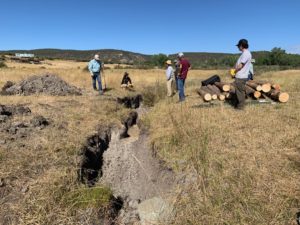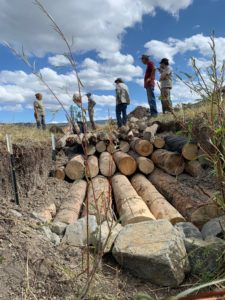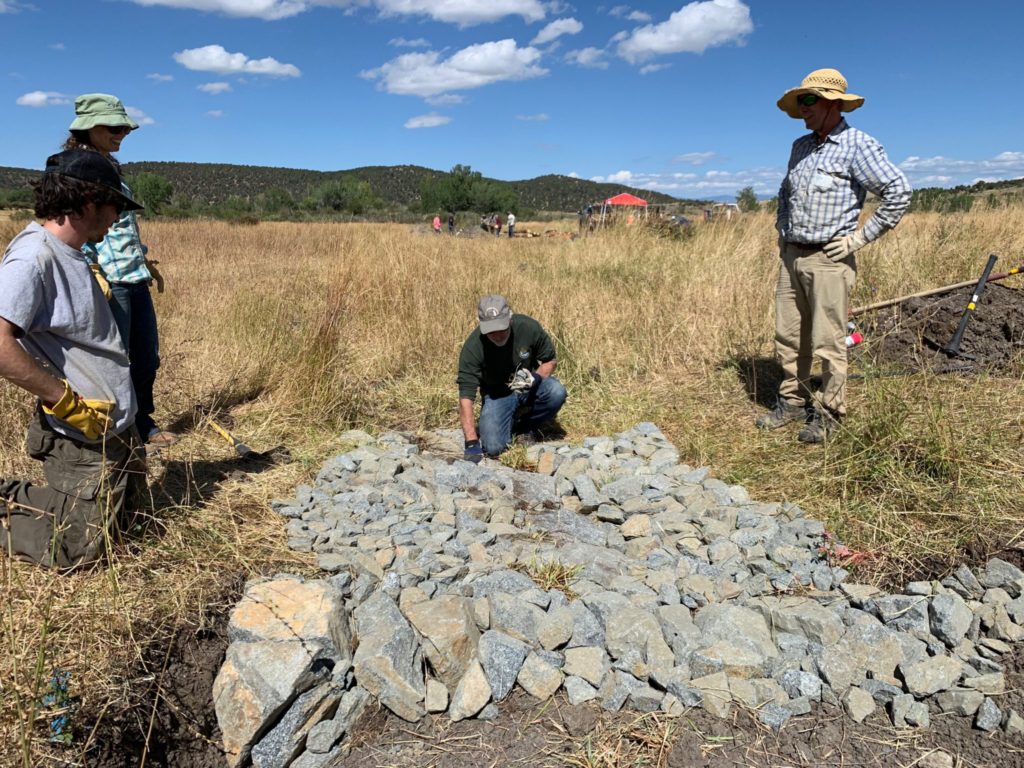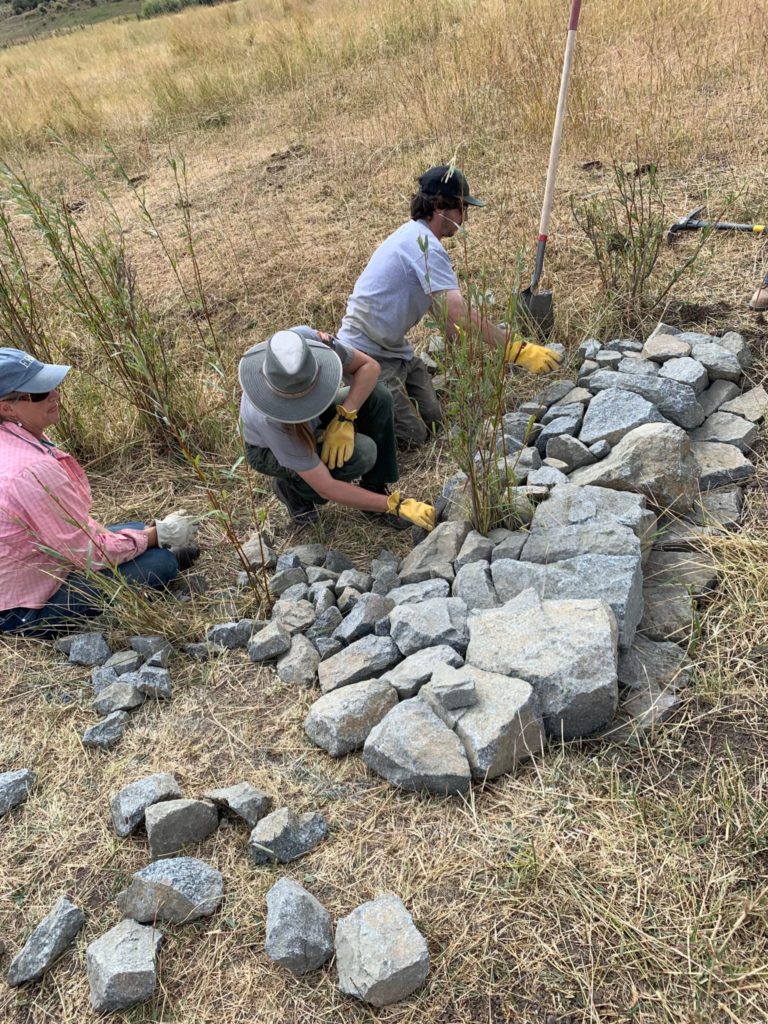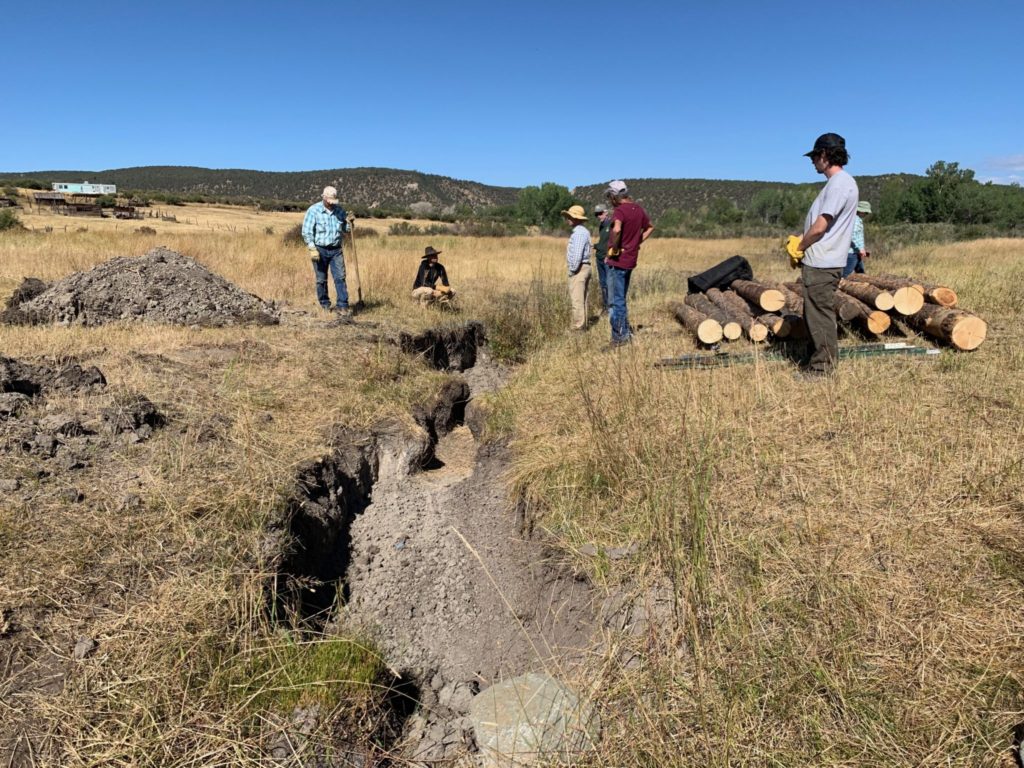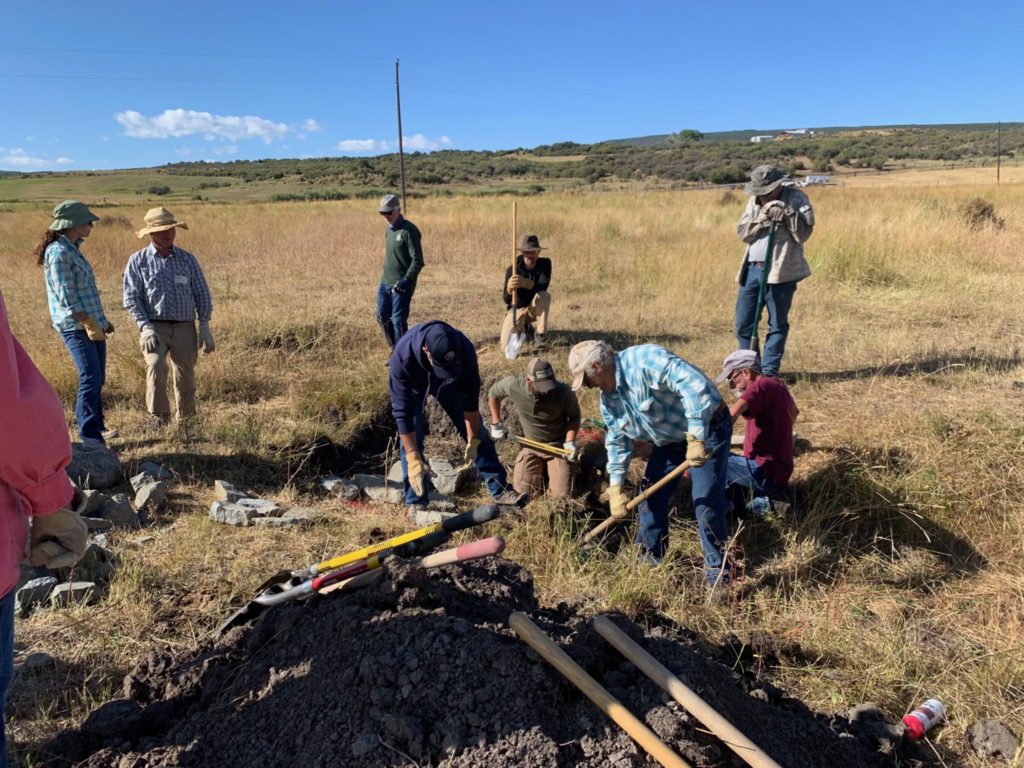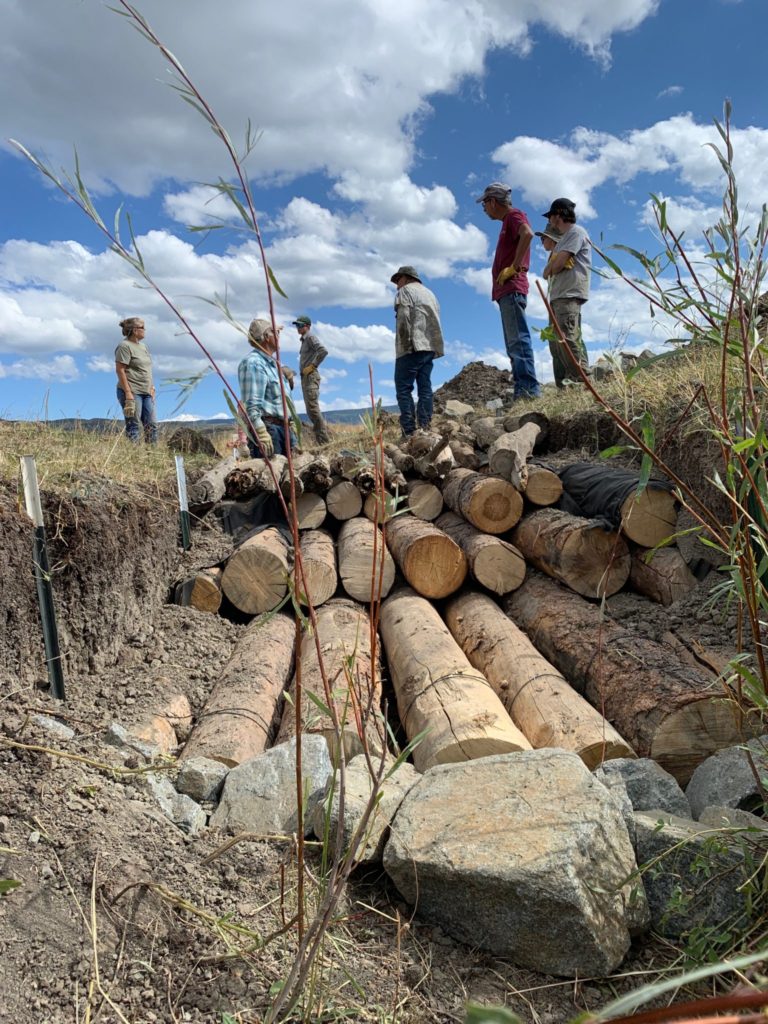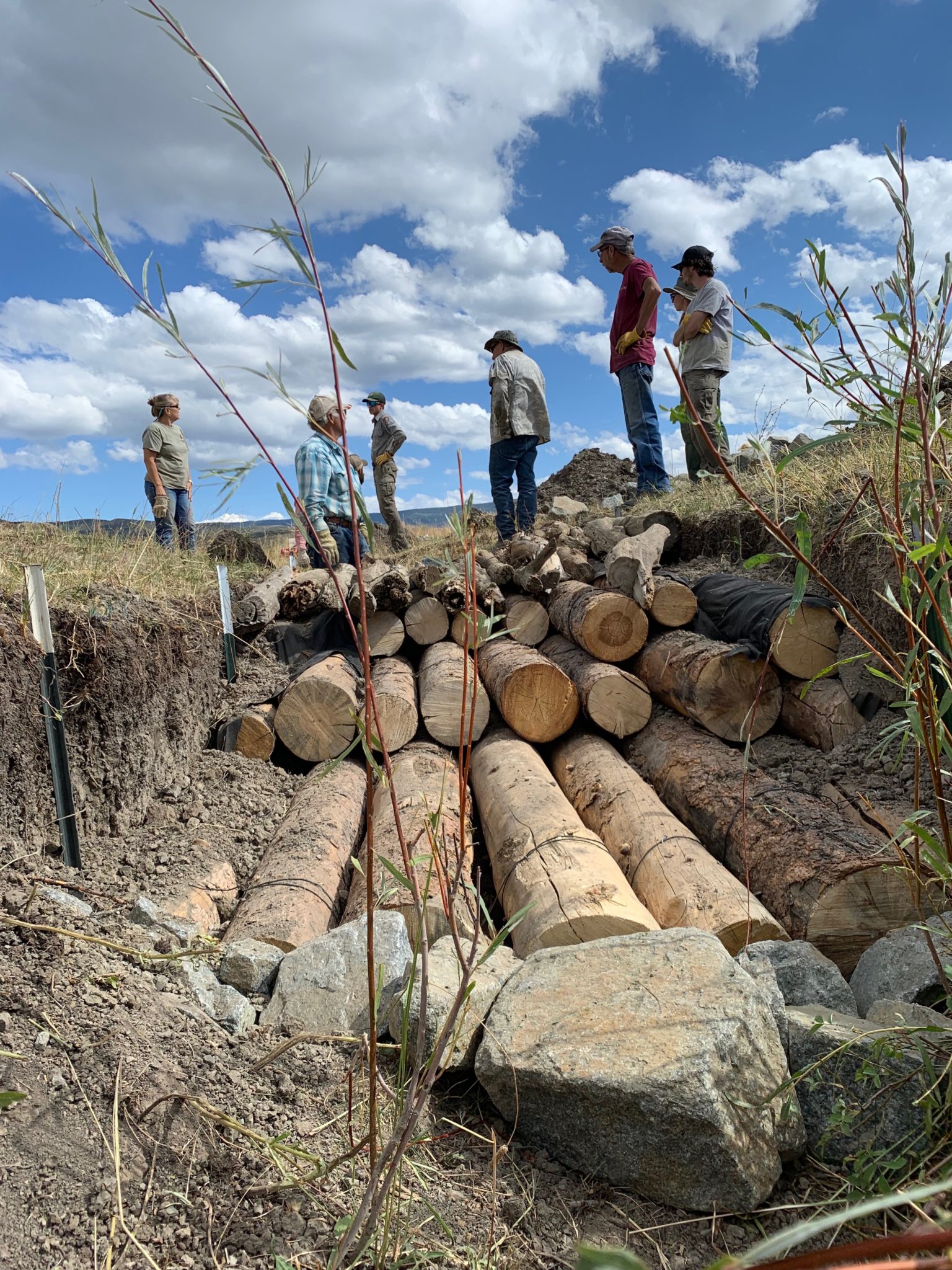
The Western Slope Conservation Center collaborated with Colorado Parks and Wildlife, Bureau of Reclamation, ERO Resources Corporation, and Tom Grant with the Upper Gunnison Wet Meadows Project to implement a habitat mitigation project near Gould Reservoir.
“Zeedyk Structures” coined by Bill Zeedyk, are intended to address shallow headcuts or small incised channels which impact meadows on low-sloped gradients in sagebrush lands.
Headcuts are identifiable points of active incision where there is an abrupt change in channel gradient, creating a waterfall and plunge-pool. Water accelerates as it plunges off the headcut ledge, generating turbulence, scouring bed material to form a pool, and undercutting the drop-off by eroding soils. Vegetation that once held soils together is left dry, resulting in plant mortality that allows the headcut to advance upstream. Once gullies are formed, groundwater sapping (seepage erosion) can further accelerate incision in meadows as well. There are few things in nature that can stop a headcut from advancing once started. The rate at which headcuts migrate upstream depends heavily upon the soil textures and structure, vegetation, and water flow. Headcuts typically move upvalley in stages as bed erosion continues until an impermeable substrate, such as bedrock or tree roots, is reached and a new grade established.
Zeedyk techniques generally seek to slow and disperse water, dissipate energy, capture sediment, and increase soil moisture retention thereby promoting vegetation and channel recovery.
Each site is different, and an evaluation should be done to determine which solution to address different headcuts. We worked with Upper Gunnison Wet Meadow’s Project’s Tom Grant & Colorado Parks & Wildlife’s Nate Seward to determine the best solutions for our site. For more information view the technical guide here. At Gould Reservoir, we completed 3 One Rock Dams and a Log and Fabric Structure.
One Rock Dam
The one rock dam (ORD) is one of the most commonly used Zeedyk structures for channel recovery. It effectively slows the flow of water, increases bank infiltration, captures sediment and helps recruit vegetation which can raise the channel bed elevation in gradual increments over time. An ORD is made of
many rocks fit tightly together, but gets its name from being only one rock high (generally no more than a third the height of the bankfull channel).
Here is one of our completed ORDs.
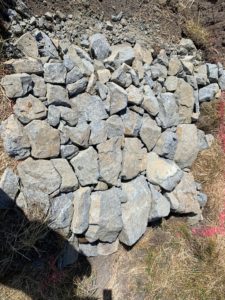
Log and Fabric Structure
A Log and Fabric Structure is used in larger (up to 4 feet tall) headcuts and areas where access to logs is more practical than rock. To make a Log and Fabric Structure, logs must be secured in place so they do not float during high flow events, and fabric is utilized to conserve moisture for vegetation.
Here is our Log & Fabric Structure
